What is the value proposition? Exponential teams, NICs, etc. Curtis R. Carlson. 1.* - unedited transcript - Thank you,
Doug. I want to talk about the value proposition and how I think about
Doug's ideas and how we apply some of them at SRI. I am going to make some
very simple concepts and I hope it doesn't offend anyone. I want
to do it to make a contrast so that when I can cross some of those
things with Doug's thoughts we will see a difference. I hope that you will
bear with me on this.
Einstein was once asked what is the most powerful force in the universe, and he said compound interest. He may or may not have said that but compound interest is still an amazing thing. This is the central theme and concept behind my talk today. Here is a simple characture of what it means to build a product. Some one has a tool, and they build a product. That is good, and historically people have worried about quality at the same time. This is pretty much the mindset. Get the product out and you are done.
What Doug is talking about is a knowledge accumulation model.
You have a product and in some sense it become a tool, Tool 1, that essentially becomes a second product, Product 2. That product can be used as a tool to make a third product. Keep this process going. You will recognize that as being an equation that says that the next thing that I produce is equal to what I have now, times fractions 1+k, and if k is bigger than one it basically derives a difference equation for an exponential. So the goal of all this is to in fact create exponential performance improvements. Some well known exponentials, Mores Law is a classic version of this where the power of computers doubles every two months. Medcalf's law is a different kind of law but it is also an exponential that says the value of a network goes up as the square of the number of connections. That was not true before we had the Internet back when we had radio and television; it was a linear model. Every time you added another consumer that value proposition went up by one. This case when you add another proposition it goes up by n squared. So, it is fundamentally different from what we had. It is not the radio, it is not television, and it is something different. These are powerful forces, as Einstein suggested we pay attention to. Now these ideas have been around for a long time.
Here is my simple characture of what the job was a long time ago. You pick berries, raise kids, hunt, you pick berries, raise kids, hunt. That is a different kind of recursive process, but pretty fundamental. Never the less, even though people were doing this they were still on this kind of exponential improvement curve, even though I say we were on the tail of series part of the curve that was linear. At least it seemed linear at the time. So, you can put Doug into this context. An A level task would be to
grow and gather food. B is an ax so that you can do it better, and C developing
new material and processes as a way to improve B so you can improve
A. A NIC was the campfire everybody got together. That was the network
improvement community. The Dynamic Knowledge Repository and the Co-Diak
was old folks telling stories. It is hard to improve on that. The
most compounding form of communication is through a story. Just that
one example shows us how far away we are scientifically in having the kind
of capability that Doug dreams about. The Meta-NIC was the annual
pow-wow where all of the different communities got together and shared
stories about how they can improve the processes about how they improve
how they do there business. There are lots of examples. Language
is one that evolved this way. You go from the stone ax, to the bronze
ax, to the iron ax. There is a nice set of metaphors here. What is
different with Doug? These ideas are resolved as mankind, so I tried to
write down what I think is different about Doug and the way he views
the world. I have emphasized a few things here. Network Improvement
Community. Network is the key word here.
It is often said that point of view is worth eighty IQ points. The objective of the NIC is to collect as many plus eighty IQ points as you can. That is collective intelligence. We are a lot smarter as a group or as the magnitude than we are individually. It is recursive, it builds on itself. That is bootstrapping idea. Doug is recursive in his model in every way that you can imagine. It really is a very through analysis of how many recursive ways you can build value to make an improvement community. It is comprehensive. There are many NICs. Quality circles have been around for a long time, but Doug says that is not enough. Quality is important. It is fundamental. That is one of the key things we ought to pay attention to. It is not enough. It applies to every aspect of the job. Innovation, new product development, ethics, and all kinds of issues that intercept what makes progress possible. It is inclusive. People often talk about computers and machines, but they forget to talk about people. I am going to argue shortly that the people part of this equation is extremely fundamental particularly in the world that we are about to enter. Doug's approach is systematic. A task, B task which improves A, C task which improves B, so that you can improve A. That kind of thinking is systematic and every time you have a situation which you don't have a B and a C, a little red flag should go up and say that maybe I have an opportunity to do an better job. It is intelligent and persistent. I made a joke about old folks telling stories. It shows to you the value of that. Doug is a great storyteller and we are all here because of his ability to tell stories. I'd actually say that he is a perfect example of the point that I am trying to make here. It has to scale. There are many MetaNICs. A MetaNIC is one to improve the NICs, but there are many, it is not just one kind and we can learn from everyone.
We all know about some exponential doubling times, computers, memory, fiber optics, the human genome, the web, there are lots of them these days. Eventually, they are going to impact things that are really matter to us like shelter, food, medicine, entertainment, and education. Education hasn't really been touched yet, it is an important problem. Entertainment. We are beginning to see that there is one so called standard, we move on to another level of technology. It has gotten to be really interesting. Back in the fifties a standard like radio or television would stick around for fifty years or more before another one would come up. It is not true anymore. Medicine is a profound one. We are being seen now as basically big strings of software. In treating us as information. Once we start treating ourselves as information then we go on the equivalent of More's Law in terms of how we're going to be treated and the way we are going to interact with our doctors. So obviously this isn't going to last forever.
Just to make this point on other way, thirty years ago most stuff was on a thirty to fifty doubling time scale. More's Law was down at the bottom of the economy. Even though it was chunking along at two times every eighteen months, frankly it didn't effect very much. That is different today, More's Law intercepts just about everything. That is basically the motivation behind the bubble that we are going through now. Of course, Medcalf's Law came along in the form of the Internet as another driver to push the activity that is going on. Those are not going to stop. They are going to affect most of that other stuff too, as I just tried to argue. So most of the things that are important to us are going to be on some kind of exponential in the area that we are going into.
The question comes up that if you want to be on an exponential, what are the key ingredients that you must satisfy to be on it. I think that there are four things. I believe if one of these is missing, it doesn't work. I believe that there are other things too. Doug is always arguing the whole family of things. I am going to argue these four. First, it has to be an important problem. It has to be something where there is no limit. You double the performance, it is like raising a kid. You teach them something you want to double it and double it. There is basically no limit to how much you can teach your child. Education. Communication, fiber optic communication I put this one down right now because for every having of the cost of the fiber optic communication, the market potential goes up by fifty percent. You can't satisfy it. So, the companies that are after that market are doing everything that they can to grow as fast as they can. Ideas. In order for you to say on an exponential there needs to be new ideas. You can't grow unless there are new ideas. That means concepts, representations, new technologies, invention systems, and business innovations. Ultimately business innovations have historically been more important than the technology. The technology opens the door, but it is the business innovations that really makes it work. Strategies as Doug has mentions. You also need resources. People and dollars. Today dollars don't necessarily matter. You can raise lots of money, the only thing that is really important is do you have a keen idea, and do you have the people. You need a recursive process. Build it and iterate. If you have these things you can be on an exponential.
At SRI, we take these ideas quite seriously, and we apply them to a couple of different activities. We apply these when there is an important problem. If it is a trivial problem, then we don't think about it we just get on it and then go on to the next thing. If there is a really important problem, that society needs solved, we will go after that one. That requires a vision and a strategy to think about those. When you think of Doug's classic work in 1968, he had a very powerful vision that motivated Jeff and others to join him. To make computers and humans more intelligent. To create a more productive and creative environment. Champions and teams. I like passion. I like people with passion because I think that they change the world. Doug is a passionate champion of his ideas. You need ideas. You need new ideas, and lots of smart people in many disciplines because most of the problems that are interesting today are multidisciplinary. You need multiple representations and mathematics but if you don't have at least two representations, you can't solve a hard problem. Format's Theorem was solved with something like forty to fifty transformations to be able to look that problem in enough ways to solve it. That is a metaphor that is useful for all of us in our work today. There are business models, processes, and human considerations, which I come to. And the recursive process. What this means is if you are putting together a proposal you put it together quickly, you put it in front of people, collect ideas, you do another version, you do it again. If you are doing a demonstration, it is not enough to talk about it. Talking about it doesn't do it, it doesn't capture the idea. You have got to build the demo, put it in front of people, collect their ideas, and implement them again. You need to do that really fast with a lot of enthusiasm. If you do those they you get on... there is no such thing as an exponential for this kind of activity but there is something that looks an awful lot like it. It is fun when you do this. I want to get back to another thing that Doug emphasizes. Technology may be a driver for this but the thing that makes it work is people. It is perhaps the most important thing in the world today, the technology is going to come but you need to think about how you are going to treat and work with people. People make exponentials work or not work. If you have a company that has a doubling time of two every six months, and you have a personnel crisis in your company, you can be out of business. It is very non-linear when these kinds of effects come together and you get involved in a business that is so dynamic that is doubling every six or twelve months, anything a financial or personal crisis, it can basically crack the bubble and put you in jeopardy.
So these funny words that are in this view graph are actually things that we take very seriously. The three commandments. Respect, integrity, generosity is spirit. At SRI we have at least six NICs that I can count that are up and running. I went to the person who runs one of them the other day. I said, when you put together a NIC, what is the most important thing? I thought she might say the application or something. She said Kurt, it is respect and trust. I said I am sure that is true, but what else comes to mind. She said Kurt, it is respect and trust. I said well, I understand that, but what else do you think about. She said Kurt, it is respect and trust. How many times does she have to tell me that if you want to have a network community, and you don't have respect and trust, nothing can happen. It is really fundamental. So these funny words, you know Gilbert Stock and Trade, cynicism, distrust, and misunderstanding it is natural when you are changing an organization. When you are on an exponential where you are doubling every six to twelve months, the amount of cynicism you can build up is enormous. So we have to name it, address it, and deal with it. When I am going through all of these things I really think that these things are important. More important than ever when you buy into this kind of a vision. The reason I pick staff and it's partners is that it is the only way that you can treat your staff in this kind of a world, they have to be in partners in this kind of a relationship with them. I think that is a really big transformation in the way we work. It is a really nice work. There is nothing on this page that anyone would disagree with. They are good and positive values. They are values that help people grow and be bigger and better than they are. The DNA of change has to do with there has to be a demonstrated need for change. The N stands for a new vision and the A is an action plan. If you don't have a need, a vision, and an action plan, people don't change. That is not enough. If you ask me if a company has a need, a vision, and a plan, and I don't fit into it, I am not going to buy into it. So, this personal transformation on the left hand side says vision A to vision Z. I have to help you see how the skills that you have can be morphed into this new job. When you get there, not only are you going to be valued, you are going to be more valued and have more potential and more returns than you have today. That is my job as a manage, if I can't do that, you are probably not going to buy in. And so it goes. FUD: Fear, uncertainty, and doubt, that comes up all the time, you have
to address that. The motivation part. Freedom to do your job, you have
to respect people. A is for achievement. A lot of us are scientists
in this room. The thing why we get into the business is for achievement.
We want to make a difference. I stand for involvement. If you don't
involve us in decisions that are important to us that can affect
our freedom to do our jobs, or our ability to achieve, it is predictable
that there will be a crisis. C is community. We want to be part of a community.
I believe the companies that can address these four things are well
on their way to keeping people. Just talking about this. Even if
they are not getting the kind of stock options that they are getting
someplace else. I do know that if you do not satisfy these four things
no matter how much you pay people they will not stay. They will go
someplace else where they can get those done. You can see I have
a little passion on this topic.
I went thought this because I wanted to make a point about Doug's work. If you accept the idea that we are moving into an exponential world, and the business models, the way we do business needs to be exponential, then you can look at other organizations and quantitatively say are they on that path or aren't they? DOD research, corporate R&D, and incubators. I pick four things with Jeff and Doug the other night. DOD research. It should go 6,1,6,2,6,3 they have a linear process for innovation. How can they be successful in this world? They are not and they can't be. You can just look at and the way that they do business. Corporate R&D. Put a lot of really smart people in a building out in Montana some place, and don't let them interact with the market and all of the other people in the company. You have to get permission from some vice-president before you can go and talk to somebody, how can this be useful? It can't. This is basically going away in America. Incubators. That is another one we came up with. It is a really curious idea. On the face of it, it is a really good idea. Let's take a couple of smart people who want to form a company. We will put them in a place, take care of heating, and give them janitorial services, but there are no ideas in an incubator. It is a sterile environment, it doesn't feel like an exponential environment.
You look at these and say what is missing? It become easy to look at them and say what is missing and what is added. This diagram is an attempt to begin to think about some projects that would satisfy some of these requirements. Where you could go to people and challenge them about why they would like to participate and ways that they may want to participate. I mentioned DOD on the left hand side. That is a great example. They are so fundamentally broken that almost any improvement would make a huge change about how they do business. So, what this says is go to DOD. I'll do that. What they ought to do if form a NIC. To pick a problem that is important to them, and use it as a benchmark for their thinking. Use it as a bench mark for how you are doing your R&D, and the other parts of your business. Then borrow Jeff's idea from the last session. While you are at that, why don't you take ten percent of your money that you want to spend on that and put it into a MetaNIC. The tools and team box. Work on some hard fundamental problems, and learn from your experiences that you collect from that. I put some things that need to be worked on. Collaborative environmental space, don't work today. In spite of what people say, they don't work. There is no security, they are not interoperatable, and you can't have the kinds of collaborative tools that you want. They basically don't work. You can't do it. It is a good thing to work on. By the way, if it is out of the context of an application, it obviously doesn't make sense to do that. DOD here is something that you could make a big impact on, but putting them into the right environment. Data bases, the CoDiak. I told the story about old folks telling stories. That shows you how far away data base technology is from the kind of goal that is required for this. That is a grand challenge and a good problem to work on. Human performance. I emphasize the human properties, because they ought to be kept track of. When that lady I mentioned, Judy, said respect and trust, that should be understood. What does she mean by that? How do we capture that and share it with other people so that they don't have the same personal crisis the next time that they form a NIC and basically do the same thing. Doug mentioned world help, I think that is another great application. I am going to be giving a talk to the head of the National Cancer Institute and I am going to propose that they form one. Education. We already have a bunch of ones going in education. So, if we could get them to be taxed according to Jeff's rule, maybe we could begin to put together a MetaNIC. Maybe other groups would form other NICs and they would have their MetaNIC, and you could get people to share and they we would begin to increment recursively. If I could steal a word. Move toward this vision that Doug has been laying out. Inclusion. I think that the goal of this needs to be exponential performance
improvement. I think that is a grand challenge, I think it is inevitable.
Frankly, we don't have any other choice. We have to move in that
direction. It requires important problems, champions and teams, lots of
ideas, recursive processes and more.
Great human values and improvement based on respect and trust
I kind of like that and would like to acknowledge any ideas that I have picked up from a lot of really smart people. Just mentioned some here Bill Welmont, who is a wonderful guy, we actually have a draft of a book on exponential teams. Romanovski, a colleague from Saranov. My wife, and of course Doug, so thank you. Audience: I'd like to pick up on the DOD idea. I want to share with share with you right away DOD came to us as a darba initiative, it essential said the same thing, the system is broken. DOD takes seven to fifteen years to put the research into any kind of product that might be useful. As a result they started an initiative called ACTION. We have been given part of that grant and have already started working on it. We are planning a workshop in dealing with those issues. What we are going to be dealing with is not the DKR or CoDiak part, because there are other people who are dealing with that. We are talking about some of the strategies and issues that have to do with business and economics, I would like to compare notes because we have some money to do that. Great, I would love to. The thing I think would be useful for DOD is to have an exemplar. They need something that they can constantly look at and compare what they are doing today with what they ought to be doing. I think that is a great contribution from Doug. If we could work together to create that it would make a great difference because basically they try things. When you look at the trials you can find the things that don't work. It is broken in some really fundamental way. Even thought it is interesting it is not going to be successful. Audience: I have two questions. The first is about benchmarking. It has been apparent from previous sessions at SRI that benchmarking is something important that is going on with in SRI. Do you have any benchmarks for measuring your own exponential improvement. No offense. The second question I had was regarding your comment on collaborative environments. What is your opinion on augment NLS in terms of how it addresses needs we have for collaborative environments. I am not qualified to answer the last one. I will answer the first on however. We have very poor benchmarks. The way I see it is successful, is when you can watch it happen. When a team goes from nothing to doing something that changes the world in six months. In retrospect you can see what went on and it certainly was not linear. Whether it is exponential or not, it is certainly not linear. When you see people who don't do this. In my experience, when all of those ingredients are in place, the percentage of success is about 95%. When one of those ingredients is not in place, the percentage goes down to about 5%. When we put together teams, if I don't see all of the ingredients, we don't do it. That is one kind of benchmark. Now the actual rate depends on all kinds of things. The web stuff that is different from biotech stuff which can take many years because it is a lot harder to process systems and come up with the technology then it is to come up with the concept. Audience: Do you see the possibility to do multiple intelligence research. The ability to do far left brain, far right brain to tap into different forms of intelligence as tying directly into exponential performance improvement. I do. I think that is one of the beautiful things about putting people together in a room, they think differently and so they develop different representations of the same problem. That is one of the things that you want to tap into. I mention that the services do very simple stuff. They give people a task and they have them solve them individually. Then they give them the same kind of a task, and have them solve it as a team. Then the compare the scores. It is not even close. They don't have to tell them the implication of that when they are done. Audience: Does Howard Gardeners work and some of the people that are around that have any direct influence? The interesting part about that is, take any of the practical implication of say Michael Jordan's physical intelligence, to get more specifically into this area. Audience: Don't know. Jeff, what is the most important thing to you? Jeff: In what respect? Audience: What do you think about these things at SUNN? How do you think about what is important and what goes on in your company? Jeff: That is such an open-ended question. In some ways, I think SUNN has stumbled into some of these things in an interesting way with out really understanding it. I want to go back to the DOD thing a little bit, and maybe abstractly tie these things together. SUNN unlike all the other computer companies, SUNN hardly makes anything in the hardware that it ships. It is an interesting phenomenon. So we don't have a FAB plant, we design ships, but we don't actually make them. We don't make CRTs, we don't make power supplies. We don't make disks. We actually don't make any of the components that we put together. Yet some how we have managed to do quite well, both in terms of market growth and stock shares and stuff like that. So what is going on there, I can relate it back to the DOD example in a way, we basically take components from all of the other companies in the world and piece them together in a way that allows us to massive system integration value. Do that in such a way that our component suppliers, we can choose and stay ahead of the competition in each individual component. Yet all of our competition has availability to all of those components but we have some how mastered a way of putting that together so that our system, total system integration in what we deliver stays out in front. It is an interesting model for a company. Which I believe I'm going to see a lot more of. It had a lot to do with what Allen talked about, about interoperatability of the components and how we manage that and deal with that. It allows us to do scalability. It is really interesting, cause we can scale up enormously to do things. I am not taking about the research part that I am in, but SUNN as a company as a different kind of model. Makes it an interesting primitive example of the way some of these things will go. Audience: I would just like to build on what you were saying about trust and teams. How an organization has got staff in Europe, both sides of the U.S., and Japan. Our membership is similarly distributed. It is about the same. Either when we are working internally, just with the staff, trying to develop product, services, or what we are presenting ourselves to....members or customers. Or when we are grouping customers and suppliers, to try and build some consensus around a requirement, an idea, or a vision, or a standard. The overriding important thing, in all of that is trust. In a virtual organization, trust is incredibly difficult to build. If you are distributed around the world, it is always the other guys fault. Communication is not the whole thing. It is about knowing that you have clear understanding about what you expect people to do. About knowing that they have a clear understanding about what they are going to do, and they are competent. It is about other things like, I remember WWC, World Wide Web Consortion, once upon a time there is no such thing as a virtual beer. If you are going to bond and build a team that is going to work effectively together, occasionally you have got to do the beer and pizza thing. Then there is the task of the senior people to make sure that it propagates through the organization in a consistent way. Trust is a really huge thing. Underneath all of that, trust isn't just about honesty and integrity. Are they able and capable, willing? At the end of the day, if people don't fit, it is so hugely disruptive. Engelbart: Thank you very much, Kurt.
---
Above space serves to put hyperlinked
targets at the top of the window
|

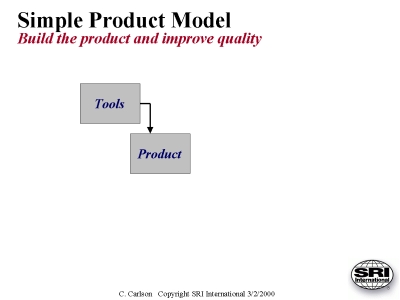 Fig. 1
Fig. 1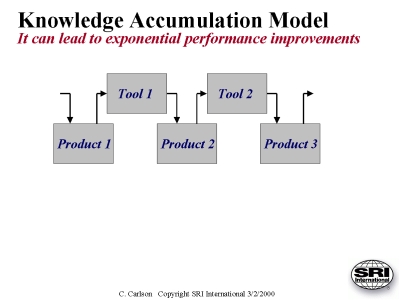 Fig. 2
Fig. 2
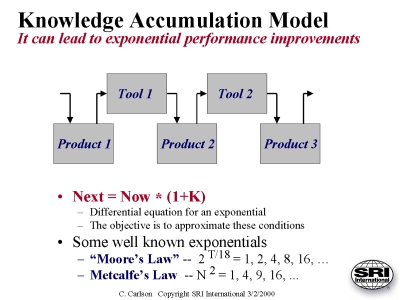 Fig. 3
Fig. 3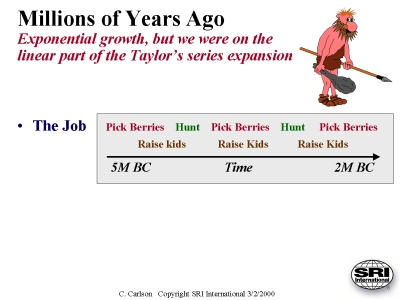 Fig. 4
Fig. 4
 Fig. 5
Fig. 5 Fig. 6
Fig. 6
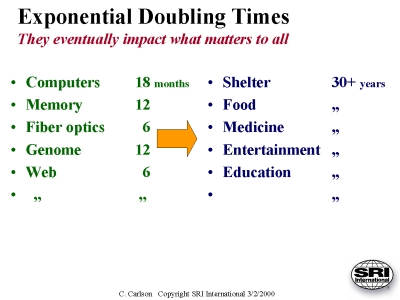 Fig. 7
Fig. 7
 Fig. 8
Fig. 8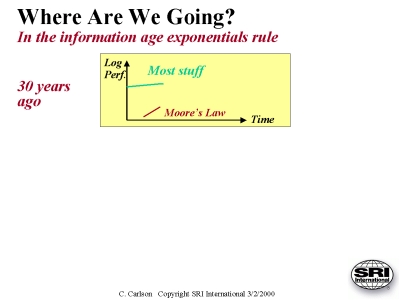 Fig. 9
Fig. 9
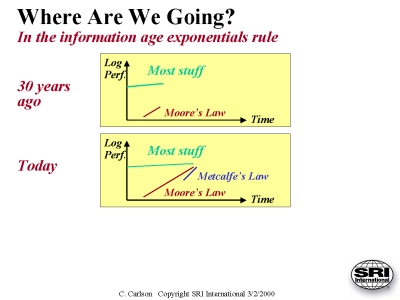 Fig. 10
Fig. 10
 Fig. 11
Fig. 11 Fig. 12
Fig. 12 Fig. 13
Fig. 13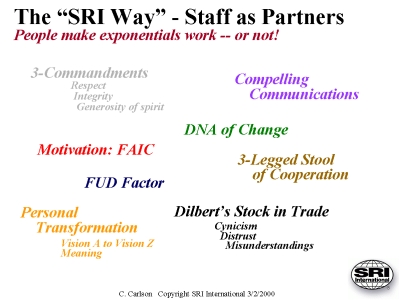 Fig. 14
Fig. 14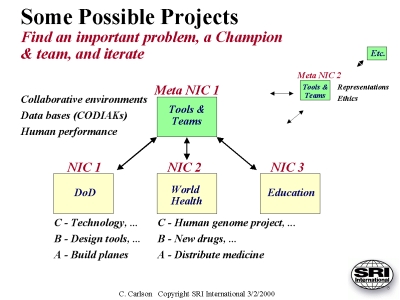 Fig. 15
Fig. 15